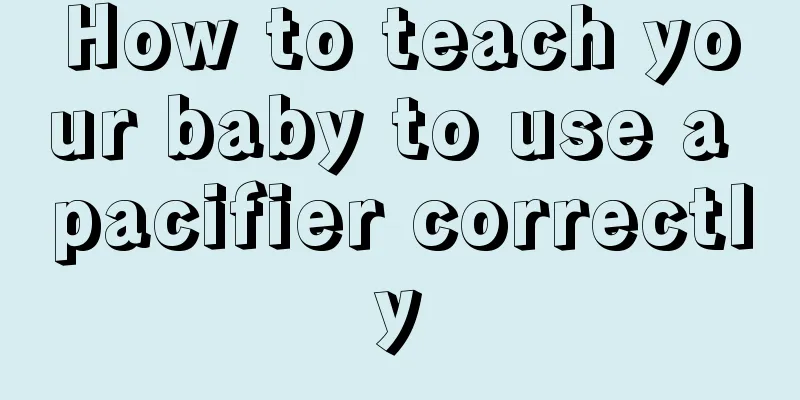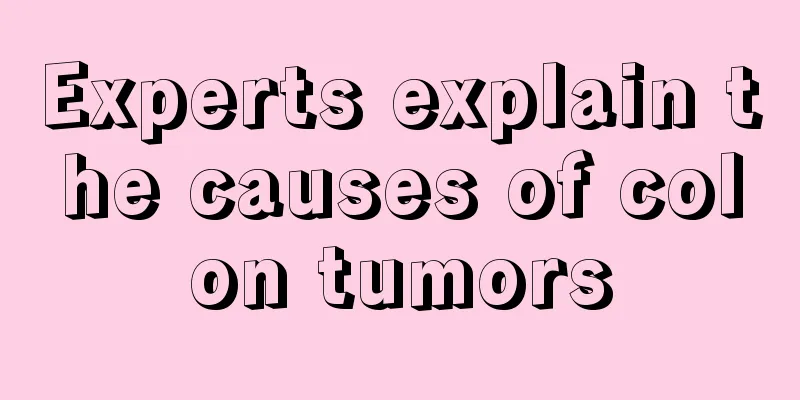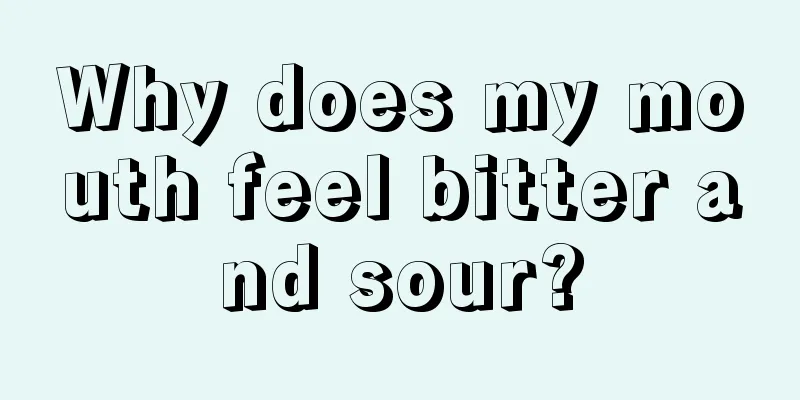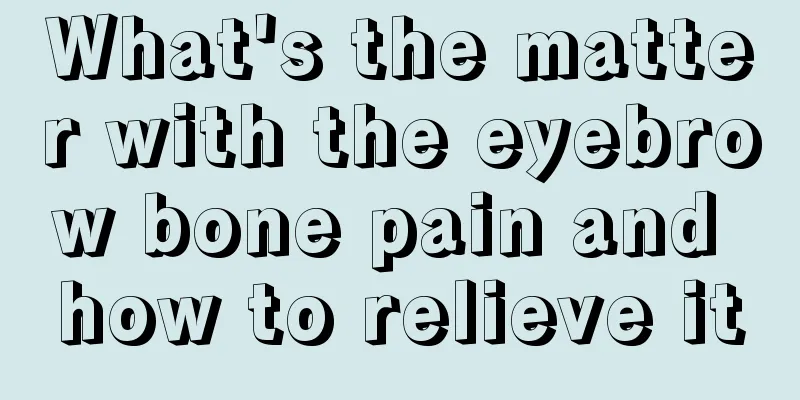How to teach your baby to use a pacifier correctly

|
Babies under six months old need comfort and a sense of security, so what they need most is a pacifier. A pacifier can relieve hunger, fatigue and irritability, and it can also stop the baby from crying. When using a pacifier for the baby, it is best to let the baby fully accept it. At first, you can hold it in your hand and play with it, and then slowly feed it into the child's mouth. You can also apply juice or milk on the pacifier and feed it to the baby. At what age can a child use a pacifier? Young babies, especially those under 6 months old, need the help of a pacifier. They need a lot of special comfort and care whenever they feel bloated, hungry, tired, irritable, or trying to adapt to an environment that is new and unfamiliar to them. If food, gentle shaking, patting on the back, the mother's gentle embrace, gentle music or singing, etc. are not enough to calm him, he will start sucking his fingers. At this time, parents should consider using a pacifier for the baby. Babies are usually very picky about the size and shape of pacifiers, so in the beginning, you should let your child try several pacifiers of different shapes and sizes, observe his reaction, and until he chooses one that he is satisfied with. For children who are already too dependent on sucking their fingers, mothers can apply milk or juice on the pacifier to induce the child to like the pacifier and thus quit sucking his fingers. Most children will actively quit the habit of using pacifiers when they are 6 to 9 months old. This is because babies at this age begin to learn skills such as sitting and crawling. Their interest is focused on the joy of reaching out to grab things. These growing skills and control abilities have made them feel very satisfied, so the pacifier is no longer so important to them. If your child likes to use a pacifier during naps and at night and it is difficult to get him to give up this habit, you can wait until the child is a little older to get him to change this habit, but no later than 2 years old. If the child cannot break the habit of sucking the pacifier at the age of 2, you can adopt a "forced" method - change the environment, such as traveling, living with grandma, etc., and "suddenly" disappear the pacifier. Although the sudden disappearance of the pacifier may cause some discomfort to the child in the first few days, the transition is relatively easy and parents do not need to worry. Will a pacifier affect breastfeeding? Babies are very smart and they will clearly know the difference between their mother's nipple and a pacifier made of rubber or silicone. It is usually recommended to wait until your baby is at least three weeks old before giving him a pacifier. When a baby needs his mother's care and comfort, he will firmly choose his mother rather than a pacifier. Research shows that there is no basis for the claim that pacifiers affect breastfeeding. On the contrary, when a child is given a pacifier, it is likely to promote breastfeeding. This is because pacifiers allow children to develop self-soothing behaviors, which can free up tired mothers to take some time off to rest, such as getting a good night's sleep. Let the mother's body recover as quickly as possible from the fatigue caused by childbirth and breastfeeding. Will pacifiers affect baby's tooth development? Whether a pacifier causes damage to a child's teeth depends on the frequency, extent, and duration of use. If a child only uses a pacifier occasionally before the age of 1, it will not affect his tooth development. But if the child is a pacifier addict and cannot live without it, you have to be careful about his teeth. For example, this may cause his teeth to erupt later than normal, or his teeth to grow unevenly, or two teeth may overlap. It is important for children to use pacifiers correctly. Pacifiers consist of a blind nipple and a flat piece. The blind nipple can prevent the child from swallowing too much air, while the flat piece can alleviate the impact of sucking on the teeth and gums through the reaction force. Compared with sucking a pacifier, sucking your fingers has a more serious impact on your teeth. Try to prevent your child from using pacifiers after the age of one. Parents can choose other comfort objects for them. |
<<: How often should you change bottles and nipples?
>>: Should the vent hole of the nipple be punctured? What is the function
Recommend
Functional brain disorders
When humans have functional brain disorders, we w...
Gastric mucosal protective agent
Bad eating habits have caused many people to suff...
What causes cervical cancer
Symptoms of cervical cancer mainly include irregu...
How to wash cotton clothes without fading?
Pure cotton clothes are also easy to fade when wa...
What are the benefits of cupping on the back?
Modern people are under increasing work pressure....
Dandelion cures hair loss
Hair loss troubles many people, and some people a...
What should I do if I have acne on my back? Tips for dealing with back acne
Back acne is usually accompanied by expansion. Th...
What is the reason for facial spots
Loving beauty is every woman's nature, and wo...
How to fix a crooked nose job
Even after the prosthetic rhinoplasty surgery, wh...
There are so many benefits of sleeping naked for girls
In life, many female friends choose to sleep nake...
What foods are not suitable for colorectal cancer? What are the dietary principles for colorectal cancer?
Rectal cancer is a malignant tumor that originate...
Small red spots on the body
In our daily life, we often find some small red s...
Can nasopharyngeal cancer be transmitted through kissing? What are the dietary treatments?
Can nasopharyngeal cancer be transmitted through ...
What is melanoma? What factors cause melanoma?
Melanoma is a malignant tumor that is mainly dist...
How to shave armpit hair cleanly
Everyone will grow armpit hair. Armpit hair grows...









